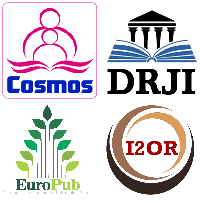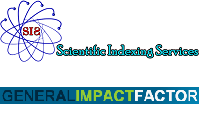The Application of Explainable AI in a Deep Learning Model for Early Prediction and Diagnosis of Late Blight Disease in Irish Potatoes: A Dataset from Kigezi Region-Uganda
Abstract
Late blight disease, caused by Phytophthora infestans, poses a major threat to Irish potato production in Uganda's Kigezi region, leading to significant yield losses among smallholder farmers. This study presents a deep learning (DL) model integrated with explainable artificial intelligence (XAI) techniques for early prediction and diagnosis of late blight using a locally collected dataset. Potato leaf samples from Kabale, Kisoro, and Rubanda districts were analyzed through both laboratory methods—including PCR, culture isolation, and CFU quantification—and image-based deep learning techniques. A hybrid CNN-LSTM architecture was trained to process visual and environmental data, while SHAP and saliency maps were employed to enhance model interpretability. Laboratory-confirmed CFU/m² ranges informed the disease grading used in model classification, ensuring biological validity and transparency. The integration of XAI allows the model to not only achieve high prediction accuracy but also highlight the underlying features influencing predictions. This approach enhances trust, facilitates field deployment via mobile platforms, and supports timely interventions to mitigate crop loss, contributing to sustainable agriculture and food security in potato-growing communities.
References
Alexopoulos, C. J., Mims, C. W., & Blackwell, M. (1996). Introductory mycology (4th ed.). Wiley.
Arrieta, A. B., Díaz-Rodríguez, N., Del Ser, J., Bennetot, A., Tabik, S., Barbado, A., ... & Herrera, F. (2020). Explainable Artificial Intelligence (XAI): Concepts, taxonomies, opportunities and challenges toward responsible AI. Information Fusion, 58, 82-115. https://doi.org/10.1016/j.inffus.2019.12.012
Atlas, R. M. (2010). Handbook of microbiological media (4th ed.). CRC Press.
Barnett, H. L., & Hunter, B. B. (1998). Illustrated genera of imperfect fungi (4th ed.). APS Press.
Beakes, G. W., Glockling, S. L., & Sekimoto, S. (2012). The evolutionary phylogeny of the oomycete "fungi". Protoplasma, 249(1), 3-19. https://doi.org/10.1007/s00709-011-0269-2
Cappuccino, J. G., & Welsh, C. (2017). Microbiology: A laboratory manual (11th ed.). Pearson.
Cvitanich, C., & Judelson, H. S. (2003). A gene expressed during sexual and asexual sporulation in Phytophthora infestans is a member of the Puf family of translational regulators. Eukaryotic Cell, 2(3), 465-473. https://doi.org/10.1128/EC.2.3.465-473.2003
Dick, M. W. (2001). Straminipilous fungi. Kluwer Academic Publishers.
Drenth, A., Turkensteen, L. J., & Govers, F. (2009). Phytophthora infestans: The plant (and R gene) destroyer. Molecular Plant Pathology, 10(1), 1-2. https://doi.org/10.1111/j.1364-3703.2008.00501.x
Erwin, D. C., & Ribeiro, O. K. (1996). Phytophthora diseases worldwide. APS Press.
Grünwald, N. J., & Flier, W. G. (2005). The biology of Phytophthora infestans at its center of origin. Annual Review of Phytopathology, 43, 171-190. https://doi.org/10.1146/annurev.phyto.43.040204.135906
Judelson, H. S., & Blanco, F. A. (2005). The spores of Phytophthora: Weapons of the plant destroyer. Nature Reviews Microbiology, 3(1), 47-58. https://doi.org/10.1038/nrmicro1064
Larone, D. H. (2011). Medically important fungi: A guide to identification (5th ed.). ASM Press.
Lundberg, S. M., & Lee, S. I. (2017). A unified approach to interpreting model predictions. Advances in Neural Information Processing Systems, 30, 4765-4774.
McGinnis, M. R. (1980). Laboratory handbook of medical mycology. Academic Press.
Ojirot, P., Muthoni, J., & Kabira, J. (2020). Late blight (Phytophthora infestans) management challenges and opportunities for smallholder Irish potato farmers in East Africa. Crop Protection, 135, 105203. https://doi.org/10.1016/j.cropro.2020.105203
Samek, W., Montavon, G., Vedaldi, A., Hansen, L. K., & Müller, K. R. (Eds.). (2021). Explainable AI: Interpreting, explaining and visualizing deep learning. Springer Nature.
St-Germain, G., & Summerbell, R. (2011). Identifying fungi: A clinical laboratory handbook (2nd ed.). Star Publishing.
Watanabe, T. (2010). Pictorial atlas of soil and seed fungi (3rd ed.). CRC Press.
Waterhouse, G. M. (1963). Key to the species of Phytophthora de Bary. Mycological Papers, 92, 1-22.
Copyright (c) 2025 Jack Turihohabwe, Ssembatya Richard, Wasswa William

This work is licensed under a Creative Commons Attribution 4.0 International License.


 ISSN
ISSN 











